Directions (1-5): The following questions are accompanied by either two statements (I) and (II) or three statements (I), (II) and (III). You have to determine which statements(s) is/are sufficient/necessary to answer the questions.
Q1. Profit percent of article when it is sold at market price?
I. Cost price of article is Rs.240.
II. Shopkeeper gives 2.5% discount on M.P. and gives 1 article free at purchase of every 12 articles and still gains 20% profit.
(a) I and II together
(b) Only II
(c) neither I nor II
(d) only I
(e) either II or I

Q3. Find the compound interest earned in 2nd year on Rs. 3430?
I. Rs. 3430 becomes 49 times in t years and 64 times in t+2 years at same rate of CI.
II. If 3rd year CI is Rs.x.
(a) Only II alone.
(b) Either I alone or II
(c) Only I alone
(d) I and II together.
(e) Neither I nor II alone

Q5. Find volume of a cylinder whose height is 2m.
I. A cone is cut from cylinder whose base radius is half of radius of cylinder and of equal height and ratio of curved surface of cone to volume of cylinder is 1:2.
II. Cylinder is converted into 6 spheres of equal radius.
(a) Either II alone or I alone
(b) Only II alone
(c) Only I alone
(d) none of these
(e) I and II together
Directions (6-10): The following questions are accompanied by two statements (i) and (ii). You have to determine which statements(s) is/are sufficient/necessary to answer the questions.
(a) Statement I alone is sufficient to answer the question but statement II alone is not sufficient to answer the question.
(b) Statement II alone is sufficient to answer the question but statement I alone is not sufficient to answer the question
(c) Both the statements taken together are necessary to answer the question, but neither of the statements alone is sufficient to answer the question.
(d) Either statement I or statement II by itself is sufficient to answer the question.
(e) Statements I and II taken together are not sufficient to answer the question.
Q6. Efficiency of A is what percent more or less than the efficiency of B?
(i) If A and B together works for only 6 days then the remaining work is completed by B in 9 more days. In this way, they take 5 more days to do that work than the time taken by them together to do that whole work.
(ii) Time taken by B alone to complete 60% of work is 2 days less than the time taken by A alone to complete whole work.
Q7. Abhi and Bindu are standing on opposite ends of a road. What is difference between their speed (in km/hr).
(i) Ratio of their (Abhi: Bindu) running speed is 2: 3 and time taken by each of them to cross whole road by running is 7.5 hours & 5 hours respectively.
(ii) They had started running and each of them after reaching their opposite end points, running back to their initial point and meet again after 9 hours from the time they had initially started race. If distance between them is 150km.

Q9. A and B make an investment in a business and amount invested by B is 40% more than that of A. What is the profit share of B.
(i) B invested Rs. 3500 and A invested for 12 months & B invested for 9 months and 2% of A’s profit is Rs. 160.
(ii) Time for which they (A: B) invested is in the ratio of 4 : 3 and A got Rs. 400 less than that of B as profit share.
Q10. Calculate the cost price of item?
(i) The profit earn on item is 33⅓% and MP of item is Rs 4 less than twice of its SP.
(ii) Discount given on item is Rs 28.
Directions (11-15): In the given questions, two quantities are given, one as Quantity I and another as Quantity II. You have to determine relationship between the numerical value of these two quantities and choose the appropriate option.
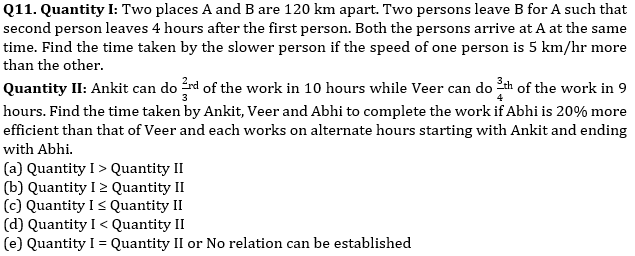
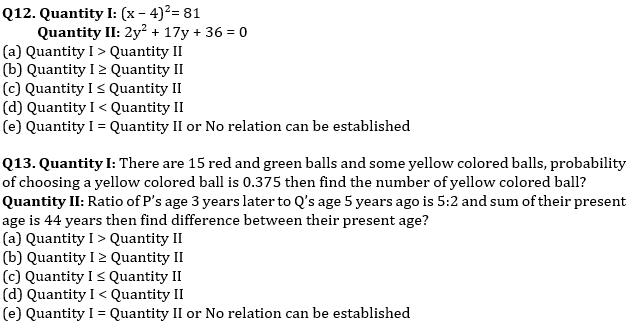
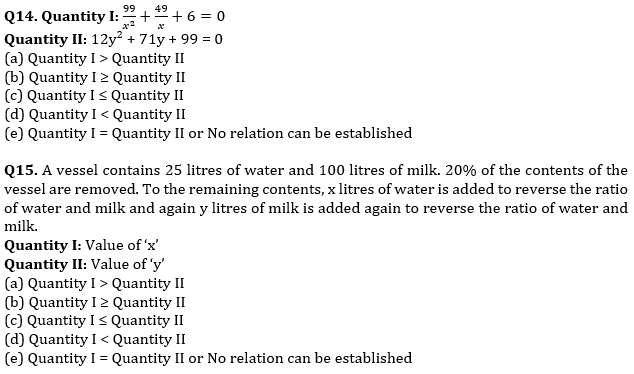
Solutions
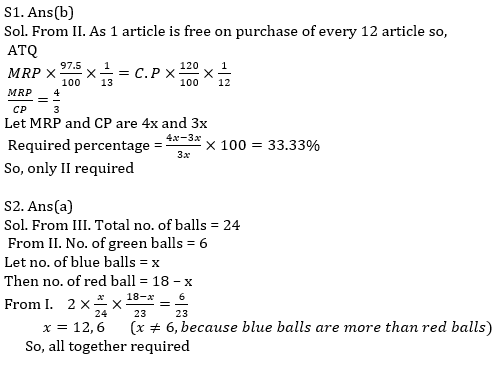
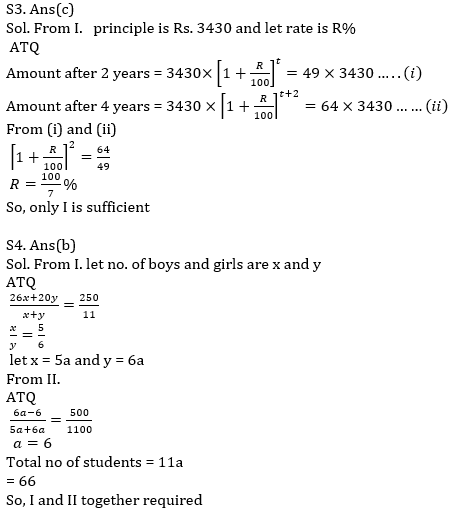
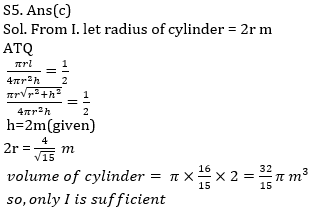
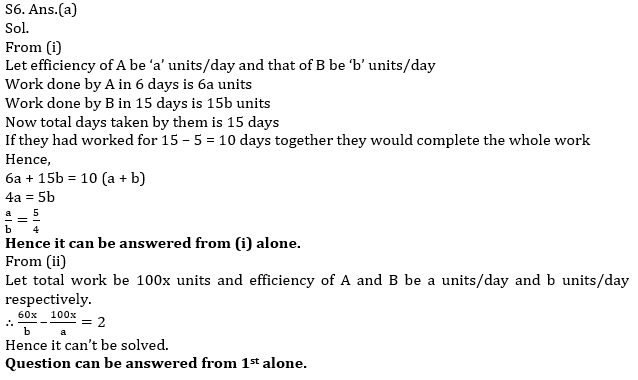
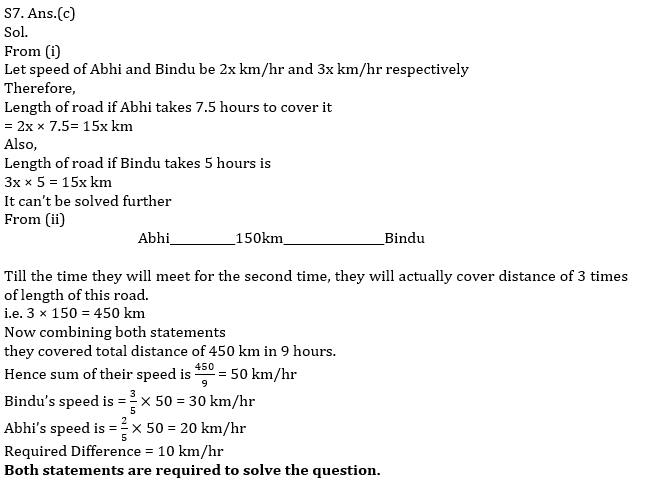
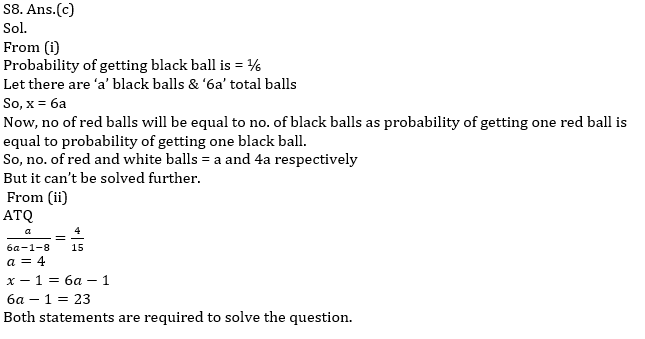







Click Here to Register for Bank Exams 2021 Preparation Material


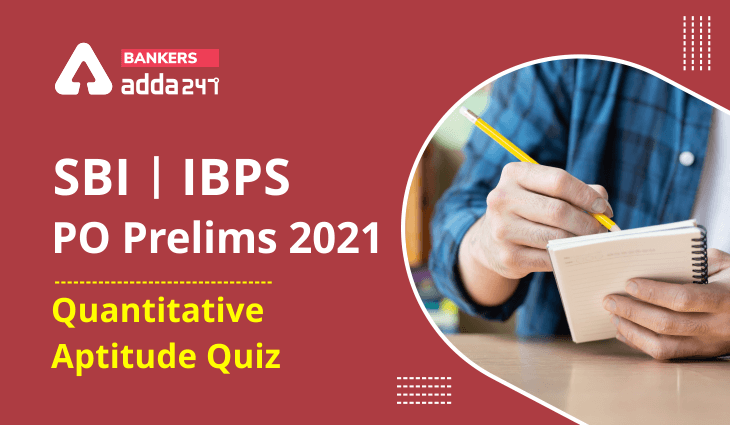


 50+ Data Sufficiency Questions For Bank ...
50+ Data Sufficiency Questions For Bank ...
 Quantitative Aptitude Quiz For Bank Main...
Quantitative Aptitude Quiz For Bank Main...





